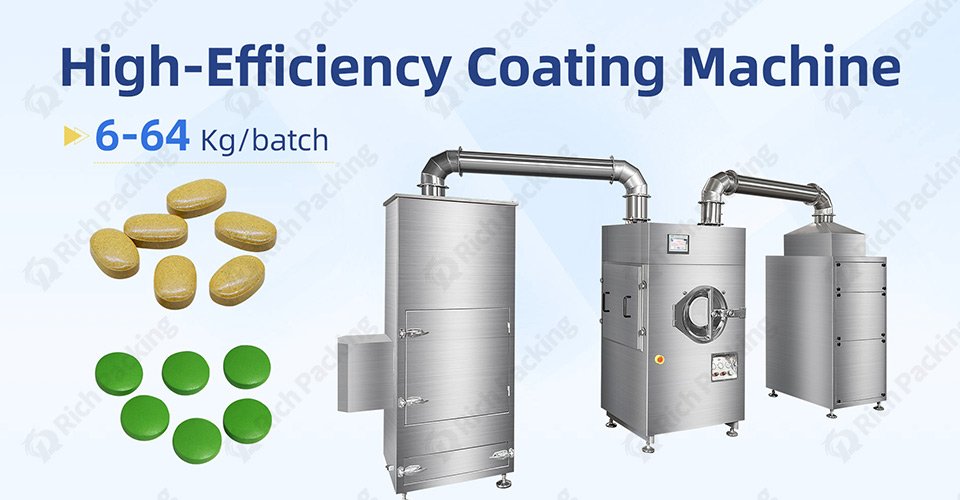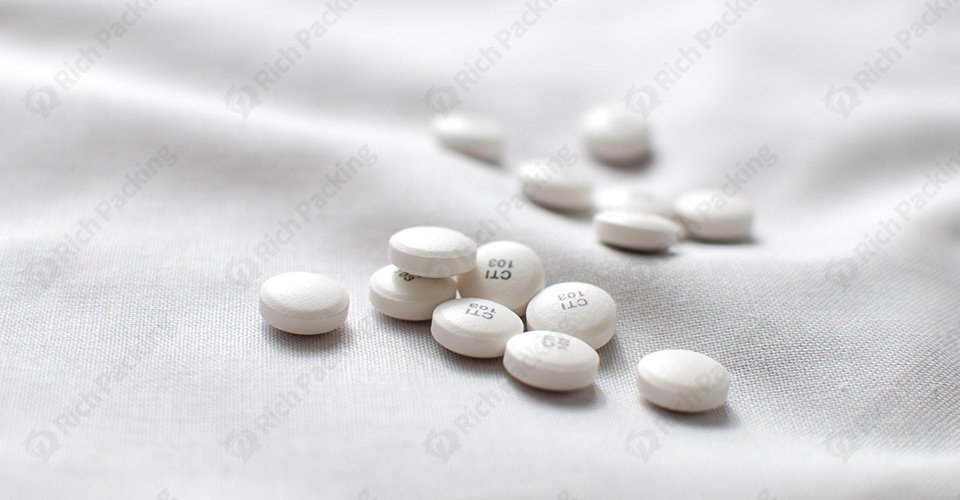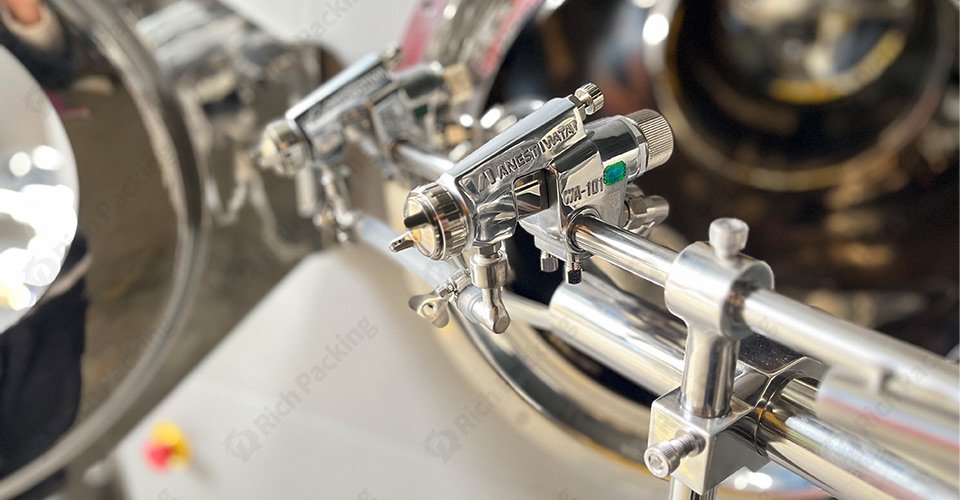Las máquinas de recubrimiento de tabletas son esenciales en las industrias modernas. producción farmacéutica , ofreciendo funcionalidad, protección y una estética mejorada a tabletas Ya sea que trabaje con medicamentos recetados, medicamentos de venta libre o suplementos dietéticos, las máquinas de recubrimiento garantizan la estabilidad del producto y la adherencia del paciente. En esta guía, ' Aprenderá sobre los diferentes tipos de máquinas de recubrimiento de tabletas, sus aplicaciones y los procesos involucrados, lo que le proporcionará una comprensión clara de cómo mejoran la calidad de las tabletas.

A máquina de recubrimiento de tabletas Es un equipo especializado diseñado para aplicar una capa uniforme, protectora y, a menudo, funcional alrededor de las tabletas. Este recubrimiento puede tener múltiples propósitos:
- Protección: Protege los ingredientes activos de la tableta de la humedad, la luz y el aire.
- Entrega controlada: garantiza que el ingrediente activo se libere en una parte específica del sistema digestivo o durante un período determinado.
- Enmascaramiento del sabor: Cubre sabores desagradables, haciendo que la tableta sea más fácil de consumir.
- Estética mejorada: agrega color, brillo o marca para un mejor atractivo visual.
Las máquinas de recubrimiento de tabletas son parte integral del proceso de fabricación farmacéutica, lo que garantiza que su producto cumpla con los estándares regulatorios y al mismo tiempo mejora la experiencia del consumidor.
Tipos de máquinas de recubrimiento de tabletas
Comprender los distintos tipos de máquinas de recubrimiento de tabletas le ayudará a elegir la que mejor se adapte a sus necesidades de producción. Estos son los tipos más comunes:
1. Máquinas de recubrimiento de película
- Propósito: Aplica una película delgada a base de polímero a las tabletas.
- Ventajas: Secado rápido, mínimo aumento de peso y compatibilidad con la mayoría de los medicamentos.
- Caso de uso: Ideal para recubrimientos funcionales como barreras de humedad o aplicaciones de liberación sostenida.
2. Máquinas de recubrimiento de azúcar
- Finalidad: Método tradicional utilizando múltiples capas de azúcar.
- Ventajas: Proporciona un acabado brillante y enmascara sabores desagradables.
- Desafíos: Proceso largo y agrega peso significativo a las tabletas.
- Caso de uso: sigue siendo el preferido para ciertos suplementos de estilo confitería o cuando se desea una capa más gruesa.
3. Máquinas de recubrimiento entérico
- Propósito: Crea una capa que resiste el ácido del estómago pero se disuelve en el intestino.
- Ventajas: Protege los medicamentos sensibles al ácido del estómago o dirige su administración a los intestinos.
- Caso de uso: Ampliamente utilizado para medicamentos como la aspirina para prevenir la irritación gástrica.
4. Máquinas de recubrimiento de gelatina
- Finalidad: Aplica una capa de gelatina suave y flexible.
- Ventajas: Mejora la deglución y reduce el tamaño del comprimido.
- Caso de uso: Común en suplementos dietéticos y cápsulas blandas.
5. Máquinas de recubrimiento de polímeros
- Propósito: Utiliza polímeros sintéticos para recubrimientos duros y duraderos.
- Ventajas: Mejora la durabilidad, permite formulaciones de liberación prolongada.
- Caso de uso: Preferido para sistemas complejos de administración de medicamentos.
Aplicaciones de las máquinas de recubrimiento de comprimidos
Las máquinas de recubrimiento de tabletas son herramientas versátiles con aplicaciones en diversas industrias:

Las máquinas de recubrimiento son indispensables en la fabricación de fármacos, ya que garantizan la estabilidad y la administración precisa de los principios activos. Por ejemplo, las formulaciones de liberación prolongada dependen del recubrimiento para controlar la velocidad de liberación del fármaco.
En el sector de la salud y el bienestar, los recubrimientos mejoran el atractivo visual de los suplementos, enmascaran sabores desagradables y mejoran la vida útil, lo que ayuda a que su producto se destaque.
Más allá de los productos farmacéuticos, las máquinas de recubrimiento también se utilizan para pastillas recubiertas de caramelo, cosméticos comestibles o tabletas de alimentos funcionales, combinando utilidad con estética.
Estas máquinas permiten una administración precisa de medicamentos, lo que garantiza efectos terapéuticos consistentes y reduce la frecuencia de dosificación, lo cual es fundamental para la adherencia del paciente.
El proceso de recubrimiento de tabletas
El proceso de recubrimiento de tabletas implica varios pasos precisos, cada uno diseñado para garantizar un producto final impecable:
1. Preparación
Antes del recubrimiento, las tabletas se limpian, secan y precalientan para asegurar la correcta adhesión del material. La superficie debe ser lisa y sin defectos.
- Recubrimiento pelicular: Se pulveriza una solución de polímero sobre las tabletas, formando una capa fina y uniforme.
- Recubrimiento de azúcar: Las tabletas se sumergen en una solución de azúcar y se giran para crear capas uniformes.
- Recubrimiento entérico: se aplica un polímero sensible al pH para resistir el ácido del estómago.
El secado garantiza la correcta adhesión del recubrimiento. Las máquinas avanzadas utilizan aire caliente para un secado más rápido, mientras que el curado mejora el recubrimiento. ' s resistencia y durabilidad.
La uniformidad es clave. Técnicas como la inspección visual y la comprobación del peso garantizan que cada tableta cumpla con los estándares deseados de grosor, textura y apariencia.
Una vez recubiertos, los comprimidos se envasan en condiciones controladas para mantener su integridad y evitar daños ambientales.

Ventajas del recubrimiento de tabletas
El uso de máquinas de recubrimiento de tabletas ofrece varias ventajas:
1. Mayor estabilidad
Los recubrimientos protegen los ingredientes activos de los factores ambientales, prolongando su vida útil.
Los recubrimientos enmascaran los sabores desagradables y hacen que los comprimidos sean más fáciles de tragar, lo que fomenta la adherencia a los regímenes prescritos.
Los recubrimientos entéricos garantizan que la tableta se disuelva solo en el intestino, mejorando la eficacia de ciertos medicamentos.
Los comprimidos recubiertos tienen un aspecto pulido, lo que los hace más comercializables y fáciles de diferenciar.
5. Funciones personalizables
Los recubrimientos le permiten personalizar perfiles, colores o marcas para satisfacer requisitos específicos.
Desafíos en el recubrimiento de comprimidos
Si bien es beneficioso, el recubrimiento de comprimidos también presenta desafíos:
Lograr un espesor de recubrimiento consistente en todos los lotes puede ser difícil y requiere una calibración precisa del equipo.
No todos los ingredientes activos son compatibles con todos los materiales de recubrimiento, lo que requiere una investigación exhaustiva durante la formulación.
Los materiales de recubrimiento de alta calidad y la maquinaria avanzada pueden aumentar significativamente los costos de producción.
Factores como la humedad y la temperatura deben controlarse cuidadosamente para evitar defectos durante el proceso de recubrimiento.
Tendencias emergentes en el recubrimiento de tabletas
La innovación está impulsando mejoras en el recubrimiento de tabletas:
Los nanorrecubrimientos mejoran la solubilidad, la biodisponibilidad y las propiedades de liberación controlada de los fármacos, lo que ofrece un inmenso potencial para futuras formulaciones.
Con la sostenibilidad en mente, los fabricantes están explorando polímeros de origen vegetal y recubrimientos biodegradables.
Las máquinas modernas equipadas con automatización e IA mejoran la precisión, reducen el desperdicio y disminuyen los costos operativos.
Conclusión
Las máquinas de recubrimiento de comprimidos son indispensables para producir comprimidos de alta calidad que cumplan con los requisitos funcionales y estéticos. Desde la protección de los ingredientes activos hasta la mejora del cumplimiento terapéutico del paciente, el recubrimiento aumenta el valor de los productos farmacéuticos y nutracéuticos. A medida que la tecnología evoluciona, innovaciones como la nanotecnología y los materiales ecológicos están configurando el futuro del recubrimiento de comprimidos. Comprender los tipos, las aplicaciones y los procesos le ayudará a tomar decisiones informadas y a mantenerse a la vanguardia en esta industria dinámica.